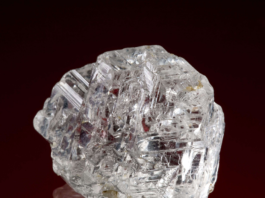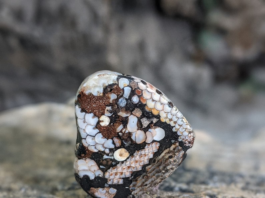Golden beryl holds a unique place within the beryl family due to its relatively rare occurrence and the striking coloration that can range from pale yellow to a rich, golden yellow. This range allows it to be a popular choice for jewelry, often seen as an affordable alternative to more expensive yellow gemstones like sapphire or yellow diamond.

The discovery and historical context of golden beryl trace back to the early 20th century. It was first recognized and mined extensively in Namibia, which remains a primary source of high-quality stones. However, other significant deposits have been found in Brazil, Madagascar, and Ukraine, among other locations. Historically, golden beryl was often confused with other yellow gemstones, but it has established its distinct identity over time thanks to its unique properties and the increasing appreciation of gem enthusiasts and collectors alike.
Golden beryl is not only prized for its beauty but also for its relative durability and clarity, making it an excellent choice for various types of jewelry. Its historical allure and the warmth of its color continue to make it a cherished choice among both jewelers and collectors.
Contents
- Physical and Chemical Properties
- Chemical Composition
- Crystal Structure
- Hardness and Durability
- Specific Gravity and Refractive Index
- Optical Properties
- Sources and Locations
- Namibia
- Brazil
- Madagascar
- Ukraine
- United States
- Gemological Significance, Applications and Uses
- Gemological Significance
- Applications and Uses
Physical and Chemical Properties

Golden beryl shares many physical and chemical properties with other members of the beryl family, which includes gemstones like emerald, aquamarine, and morganite. Here’s an overview of these properties:
Chemical Composition
Golden beryl is chemically classified as beryllium aluminum silicate, with the formula Be₃Al₂Si₆O₁₈. The distinct golden-yellow color is primarily due to trace amounts of iron (Fe²⁺ or Fe³⁺) substituting for aluminum in the crystal structure. This substitution is a common cause for color variation in beryl gemstones.
Crystal Structure
Like other beryl varieties, golden beryl crystallizes in the hexagonal crystal system. It typically forms in columnar to prismatic crystals that can be quite large and transparent. This hexagonal structure contributes to the gemstone’s durability and the characteristic shape of its crystals.
Hardness and Durability
Golden beryl rates 7.5 to 8 on the Mohs scale of hardness, making it a hard and durable gemstone suitable for everyday wear. This hardness, combined with no cleavage, means it is resistant to scratches and chipping, although it should still be handled with care to avoid damage.

Specific Gravity and Refractive Index
The specific gravity of golden beryl is approximately 2.76, which is consistent with other types of beryl. Its refractive index, a measure of how much it bends light, ranges from 1.577 to 1.583. These optical properties contribute to the gemstone’s brilliance and its ability to reflect light, enhancing its appearance in jewelry.
Optical Properties
Golden beryl is often highly transparent, though it can range from transparent to translucent. Its luster is vitreous, giving it a glass-like sheen that complements its color. The stone can exhibit pleochroism, displaying different colors or intensities when viewed from different angles, although this effect is typically less pronounced in golden beryl compared to other beryl varieties like aquamarine.
These physical and chemical properties make golden beryl both a desirable and practical choice for fine jewelry, combining beauty with a robustness suitable for a range of applications.
Sources and Locations

Golden beryl is sourced from a variety of global locations, each contributing different qualities and hues to the gemstones extracted. Here are some of the key sources and characteristics of golden beryl from these regions:
Namibia
Namibia is renowned for its high-quality golden beryl, particularly from the Erongo region. The gemstones mined here often exhibit a rich, vivid yellow color that is highly prized in the gem market. Namibian golden beryl is known for its clarity and size, with some specimens large enough to be cut into substantial gemstones.
Brazil
Brazil is one of the most prolific producers of gemstones in the world, including various types of beryl. Brazilian golden beryl tends to be lighter in color compared to its African counterparts but is valued for its clarity and brilliance. Important mining locations include Minas Gerais and Bahia, where a wide array of colored gemstones are found.
Madagascar
Madagascar is another significant source of golden beryl, offering gemstones that range in color from pale lemon to deep golden hues. The gemstones from Madagascar are typically known for their high clarity and can sometimes display a slight greenish tint, adding to their uniqueness.
Ukraine
The Volyn region in Ukraine has been noted for producing golden beryl alongside other gem-quality minerals. Ukrainian golden beryl is often pale yellow and can contain unique inclusions that are of interest to collectors and gemologists.
United States
In the United States, golden beryl is found in several states, including New Hampshire, Connecticut, and North Carolina. The American varieties tend to vary greatly in color and size, often yielding smaller crystals that are nonetheless valued for their optical properties.
These diverse sources contribute to the global availability of golden beryl, with each region offering unique variations that appeal to different segments of the gemstone market. Collectors and jewelry makers seek out golden beryl from these sources for its beauty, rarity, and the distinctive qualities imparted by its locale.
Gemological Significance, Applications and Uses

Golden beryl, with its alluring range of yellow hues and excellent physical properties, holds significant gemological interest and finds diverse applications in jewelry and decorative arts. Its significance and uses can be outlined as follows:
Gemological Significance
- Color Variations: Golden beryl’s range of color, from pale lemon to rich golden yellow, makes it particularly appealing. The depth and saturation of the yellow hues are key factors in determining its value and desirability in the gem market.
- Clarity: Typically, golden beryl boasts high clarity with fewer inclusions than other beryl varieties like emerald. This transparency is highly valued, as it allows for more brilliant and lustrous gemstones.
- Size Availability: Golden beryl often forms in large crystals, which allows gem cutters to produce sizable cut gemstones. This is particularly attractive for statement pieces or unique jewelry applications.

Applications and Uses
- Jewelry Making: Due to its hardness (7.5 to 8 on the Mohs scale) and resistance to scratching, golden beryl is a popular choice for various types of jewelry, including rings, earrings, necklaces, and bracelets. Its warm, sunny color makes it a favorite for both modern and traditional designs.
- Collector’s Item: The larger crystals of high-quality golden beryl, especially those with exceptional clarity and color, are often sought after by collectors. These specimens can be kept in their natural form or used as centerpiece stones in designer jewelry.
- Healing and Metaphysical Properties: In the realm of crystal healing, golden beryl is sometimes credited with bringing emotional balance and enhancing confidence. It is believed to aid in filtering out distractions and focusing on what is truly important.
- Astrological Uses: Some cultures consider golden beryl to be beneficial for those born under specific zodiac signs, believing it brings luck, wealth, and happiness.
- Artistic and Decorative Uses: Beyond jewelry, golden beryl’s striking appearance lends itself well to decorative arts. It can be used in ornamental objects, carvings, and inlays in furniture or collectible items, adding a touch of elegance and luxury.
The combination of its pleasing aesthetic, durability, and size availability makes golden beryl a versatile and valuable gemstone within the gemological community and beyond. Its broad spectrum of applications ensures that it remains popular among both jewelers and gem enthusiasts.






